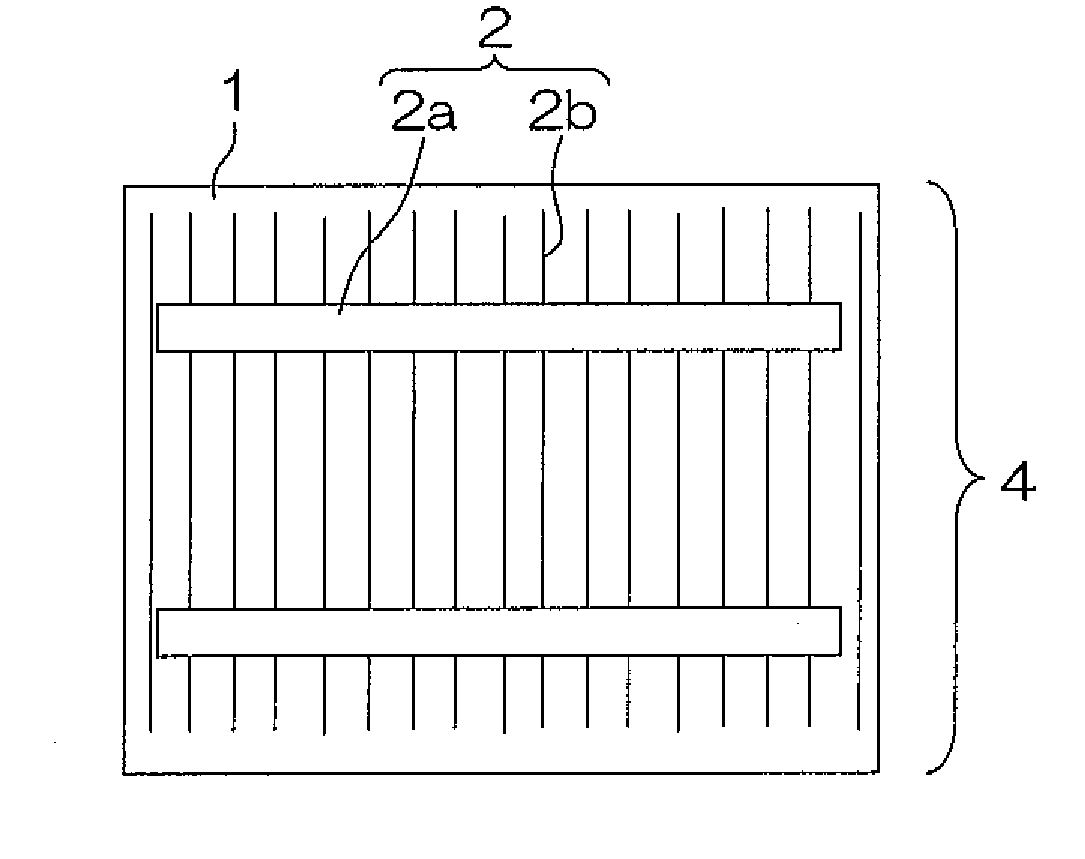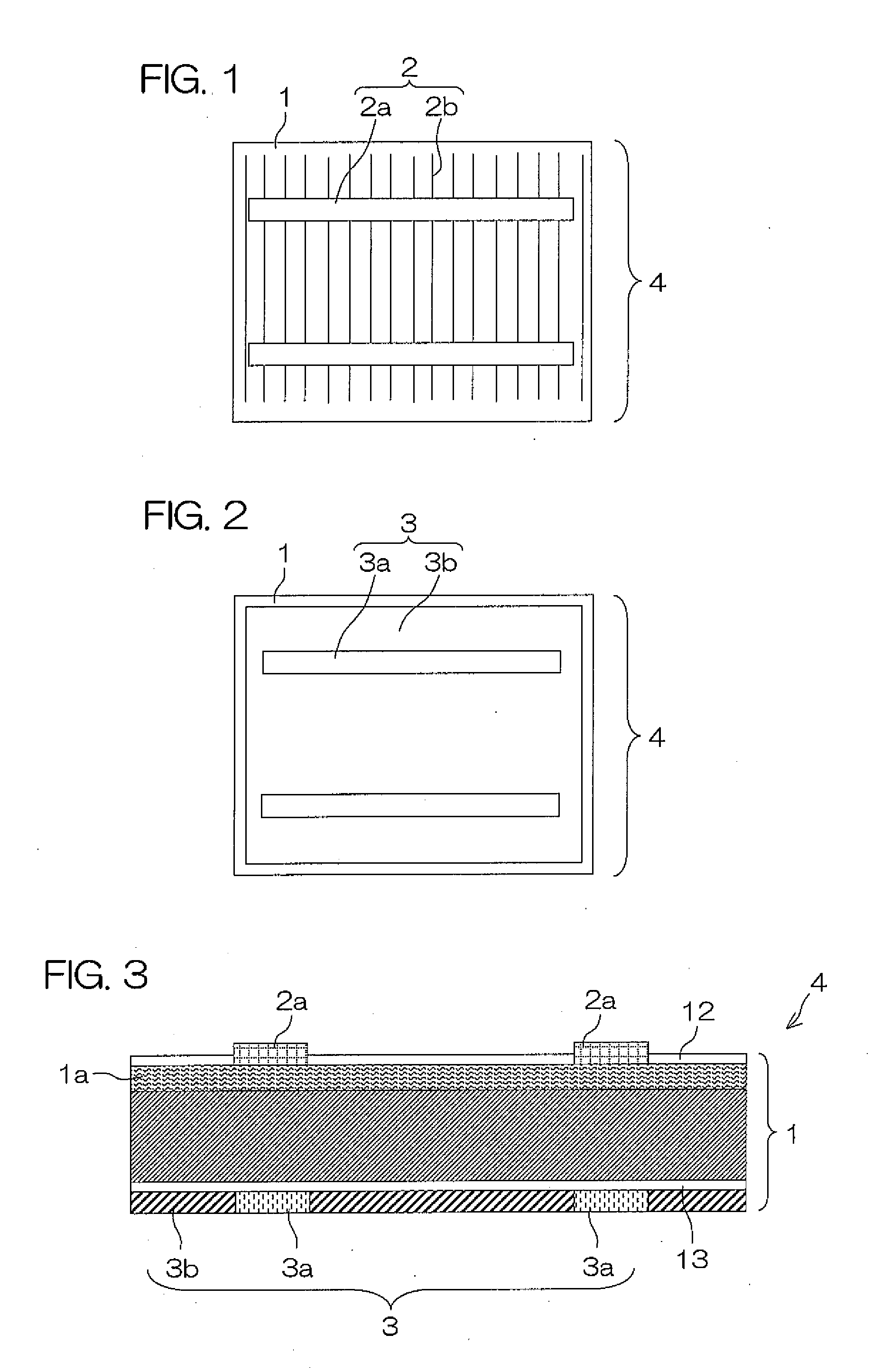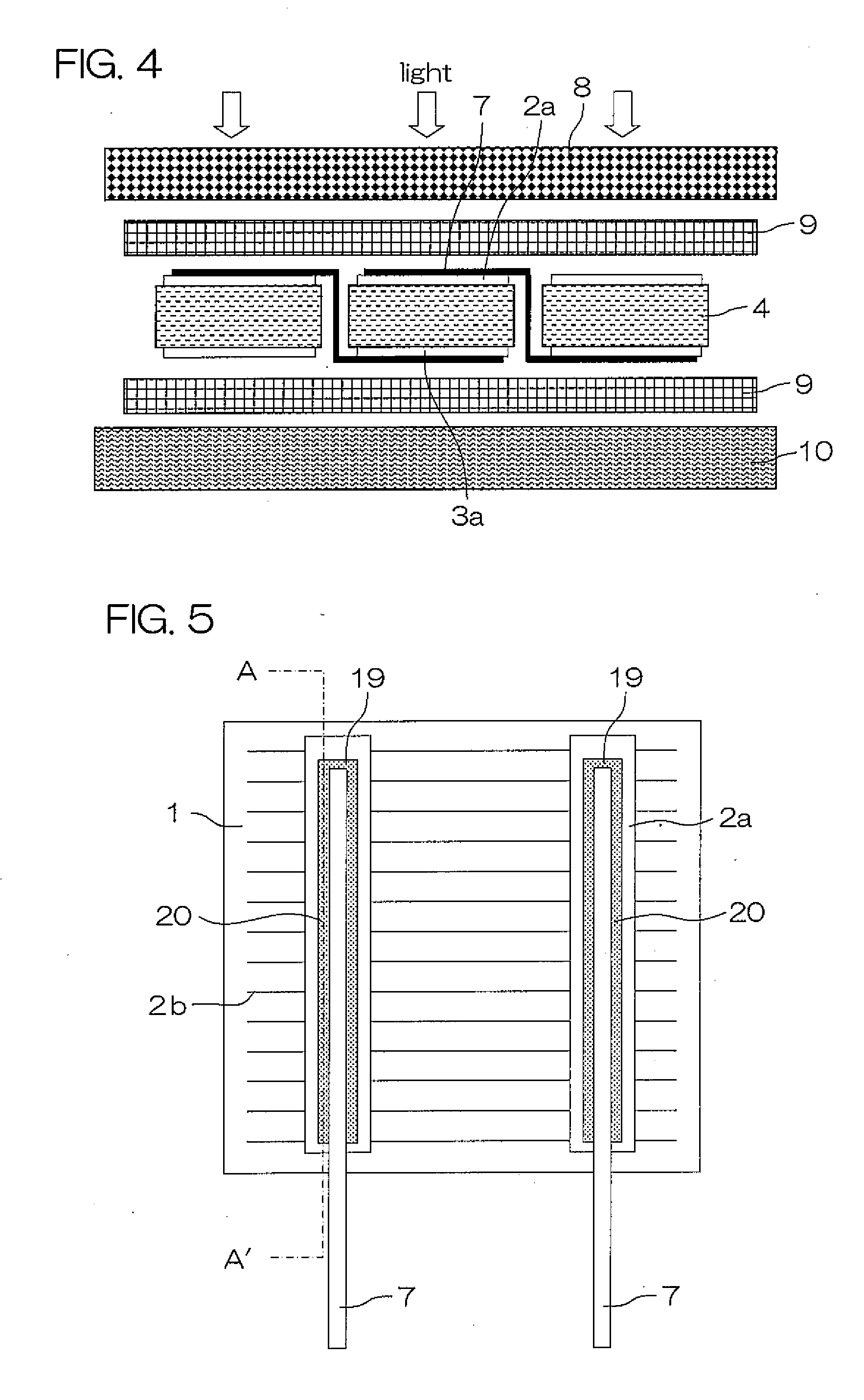Solar Cell Module and Manufacturing Process Thereof
a solar cell module and manufacturing process technology, applied in the field can solve the problems of reducing the yield in the manufacturing process of solar cell modules, cracks in semiconductor substrates,
- Summary
- Abstract
- Description
- Claims
- Application Information
AI Technical Summary
Benefits of technology
Problems solved by technology
Method used
Image
Examples
example 1
[0148] Solar cell modules were fabricated with the shapes of the fillet 19 shown in FIGS. 8 and 9 by changing some of height A of the fillet 19, indentation amount −L and bulge amount L. The height A of the fillet 19 was generally the same as the height H of the connection tab 7. Ten samples were prepared for each of L / A and −L / A, and the strengths of stress applied to the substrate 1 after welding the connection tab 7 were calculated.
[0149] The samples were prepared in the following way. A damaged layer on the surface of a semiconductor element 1 comprising p-type multicrystalline silicon that has a thickness of 100 μm and outer dimensions of 15 cm by 15.5 cm was etched with NaOH to be cleaned. Then, this semiconductor element 1 was placed in a diffusion furnace to be heated in phosphorous oxychloride (POCl3) so that phosphorus atoms were diffused in the surface of the semiconductor element 1 to form an n-type region. In addition, a silicon nitride film with a thickness of 850 Å w...
example 2
[0165] An organic electrode material including silver powder was used as the bonding material for welding the connection tab 7 to the light receiving surface bus bar electrode 2a or non-light receiving surface bus bar electrode 3a.
[0166] Meanwhile, the “organic electrode material including silver powder” refers to an electrode material in the form of paste composed mainly of silver powder, in which an organic vehicle and glass frit were added, the amounts of which were 10-30 parts by weight and 0.1-5 parts by weight, respectively, with respect to 100 parts by weight of silver. In welding the connection tab 7, a solder in a molten state was supplied to an end portion of the connection tab 7 on the bus bar electrode 2a, 3a, thereby forming a fillet 19. When the shape of the fillet 19 satisfied −0.54≦L / A≦0.1, stress Fx and stress Fy do not exceed the threshold value, and it is expected that no cracking occurs.
PUM
| Property | Measurement | Unit |
|---|---|---|
| width | aaaaa | aaaaa |
| temperature | aaaaa | aaaaa |
| thickness | aaaaa | aaaaa |
Abstract
Description
Claims
Application Information
 Login to View More
Login to View More - R&D
- Intellectual Property
- Life Sciences
- Materials
- Tech Scout
- Unparalleled Data Quality
- Higher Quality Content
- 60% Fewer Hallucinations
Browse by: Latest US Patents, China's latest patents, Technical Efficacy Thesaurus, Application Domain, Technology Topic, Popular Technical Reports.
© 2025 PatSnap. All rights reserved.Legal|Privacy policy|Modern Slavery Act Transparency Statement|Sitemap|About US| Contact US: help@patsnap.com



